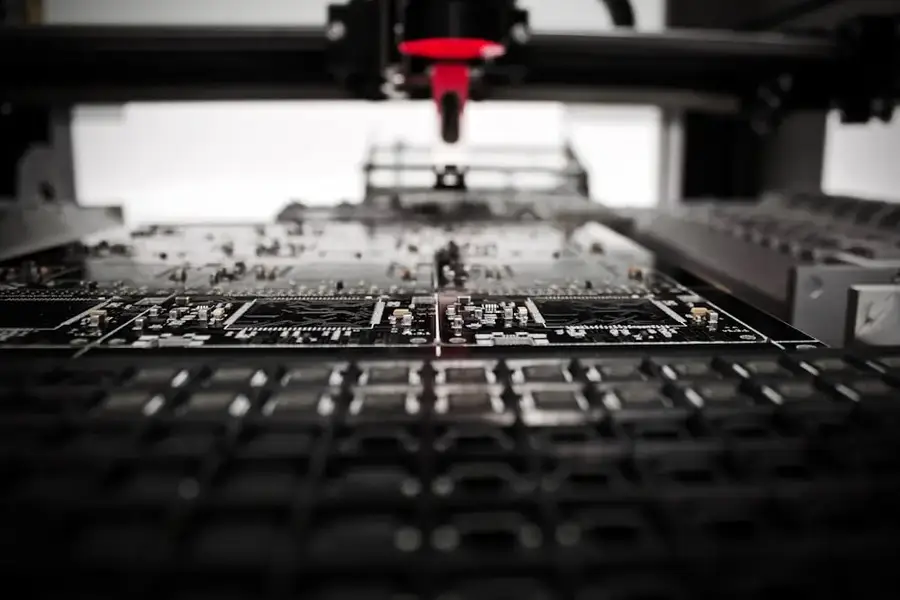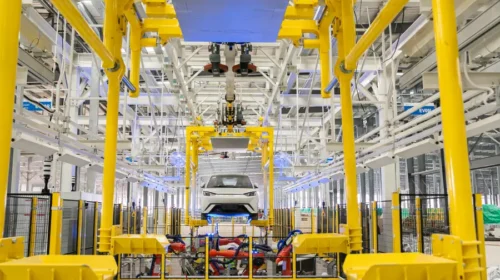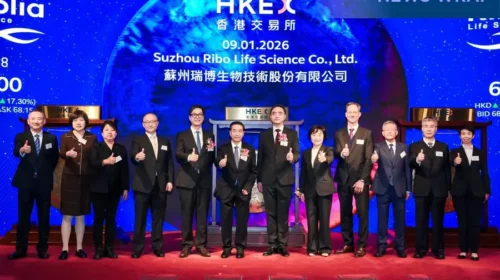Senasic seeks fast start as automotive sensor market takes off

With a Hong Kong listing, the maker of chips to check tire pressure and battery life wants to capitalize on China’s tightening safety standards for electric cars
Key Takeaways:
- About 60% of its revenue comes from integrated chips that monitor vehicles’ tire pressure
- Annual revenue tripled in just two years, but the company is struggling to deflate its losses
By Lee Shih Ta
With the rise of automative electronics, motoring has become reliant on tiny, hidden components that ensure a car is fit to drive.
As vehicles have become ever more complex, so demand has grown for embedded chips that wirelessly monitor the status of the batteries or the tires, alerting drivers to potential problems and helping to avert accidents.
A leading Chinese maker of automotive sensor chips, Senasic Electronics Technology Co. Ltd., is now inviting investors to help fund its expanding business through a share listing on the Hong Kong Stock Exchange.
To do so, investors will have to look past the firm’s chronic losses and consider the potential for profit down the road.
Senasic specializes in a type of integrated circuit known as a System-on-a-Chip (SoC). These multi-purpose chips perform a range of processing, memory and communications functions, with the benefit of compact size and low power usage. They are commonly used in smartphones, automotive electronics and smart devices.
Senasic focuses its business on automotive systems to monitor tire pressure and manage battery operations. A study commissioned for the IPO filing described the company as the market leader in China and the world’s third-largest supplier of wireless automotive SoCs, with a global market share of 7.3%.
New energy opportunities
That rise has been fueled by surging demand for new energy vehicles, whose stricter safety rules demand smarter chips. As China became the world’s biggest market for electric vehicles, it tightened safety rules, including a requirement for alerts to be generated when a battery is dangerously overheating due to a problem known as “thermal runaway”.
Even stricter rules will come into force next year, mandating that batteries must fail to ignite or explode for at least two hours after suffering thermal runaway. Senasic was among the world’s first companies to mass-produce battery protection SoCs, securing a first-mover advantage in the tightening regulatory environment.
Another trend is the shift toward automotive intelligence and wireless connectivity. Traditionally, in-vehicle data relied heavily on wiring harnesses, which increased costs and compromised reliability. But wireless battery management systems (wBMS) are changing the game, with the market set to grow at a compound annual growth rate (CAGR) exceeding 270% between 2026 and 2030, according to industry forecasts. Senasic has already launched products meeting the new standards and began recording wBMS revenue in 2025, looking to get a head start in the expanding market.
Meanwhile, intense competition in China’s automotive sector has also sent more customers to Senasic, as the car makers seek cost-effective and reliable sources of semiconductors as an alternative to imports. As the only Chinese company capable of producing tire-pressure sensor chips at scale, Senasic has entered the supply chains of China’s top 10 automakers.
The result has been explosive growth in turnover, although net profits remain stubbornly elusive. Senasic revenue has more than tripled in just two years, climbing from 103.8 million yuan ($14.53 million) in 2022 to 348 million yuan in 2024 — a blistering CAGR of 83%. Revenue rose 27.1% in the first half of 2025 to 156.8 million yuan, with gross margin climbing from 15.4% to 27.1%.
Chips to monitor tire pressure are the core driver, contributing around 60% of revenue in 2024 and 58% in the first half of 2025. Income from battery management chips has been more volatile but could grow with stricter standards for electric cars. Chips used in air-conditioning, chassis and brake systems consistently contribute about 25% of revenue.
Squeezed by cost pressures
But rapid growth has yet to propel Senasic into profit. The company has bled red ink every year since it was founded. The IPO documents describe net losses of 204.6 million yuan in 2022, 355.8 million yuan in 2023, and 351.3 million yuan in 2024. In the first half of this year the company was 143.3 million yuan in the red.
The company blamed the losses on insufficient scale to dilute fixed costs, along with hefty annual R&D expenses of between 300 million and 400 million yuan, while automakers’ pricing pressures are further compressing margins.
Still, operating losses have narrowed, when non-recurring items such as changes in asset values, share-based payments and goodwill impairments are excluded from the equation. The adjusted loss shrank from 83.6 million yuan in 2022 to 15.7 million yuan in the first half of 2025, indicating the company may not be too far away from breakeven.
Another automotive chip maker, Black Sesame (2533.HK), listed on the Hong Kong market in August last year but has seen its market value dwindle. The stock fell below its offering price on the first day of trade and has since fallen more than 30%.
Black Sesame focuses on the still-developing business of intelligent driving, while Senasic’s products are more rooted in existing demand tied to safety standards.
Still, to avoid the trap of being a high-growth company with a low market value, Senasic will have to staunch the red ink and accelerate its journey into profit.
To subscribe to Bamboo Works weekly free newsletter, click here






